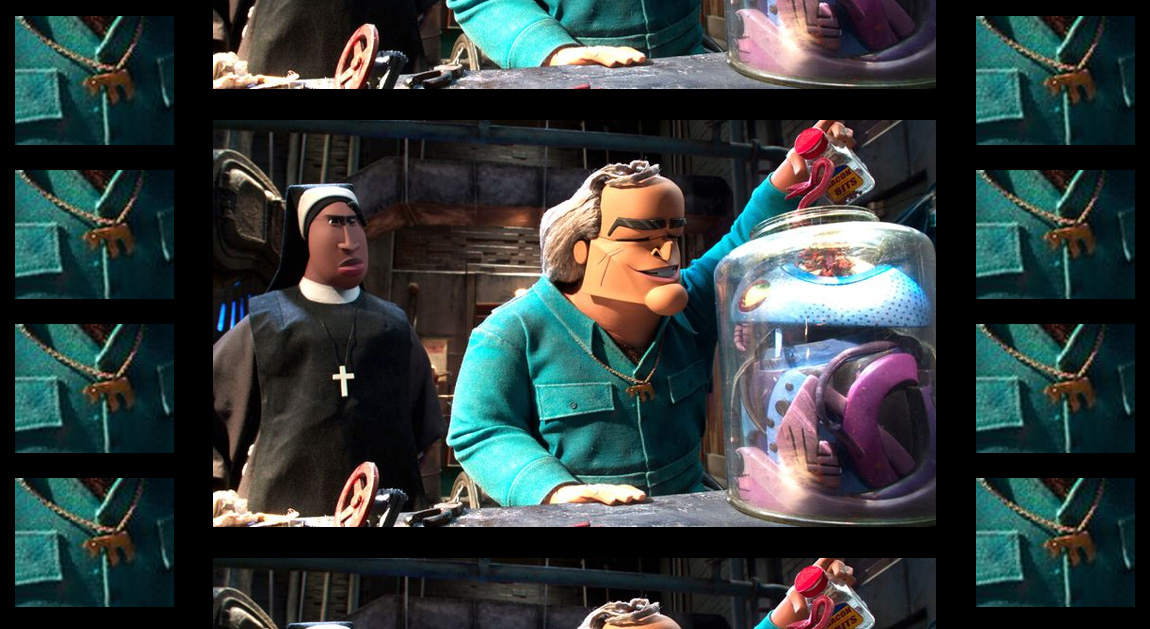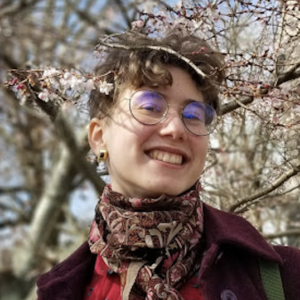“Wendell and Wild” comes from the brilliant minds of Henry Selick, Jordan Peele, and the stop-motion animation studio, Laika, the studio behind hit movies like “Coraline.” It gathered hype from social media users back in August of 2022 who were promoting new work emerging from the animation industry during a time in which many companies were canceling or removing beloved and popular animated TV shows from streaming platforms. However, you might not have heard of it because Netflix itself failed to advertise it.
This movie was released during a moment when people were re-focusing on Tim Burton, a previous partner on another Henry Selick project, and his statement that people of color do not fit his aesthetic. Jewish commentators also began to bring attention to his erasure of Jewish culture from several of his films.
When “Wendell and Wild” opened in late October 2022, most fans were pleased to find a film rich with people of color playing all sorts of roles, from an Afro-punk protagonist (Lyric Ross) to a trans, Latino supporting character (Sam Zelaya) and many more side characters from various identities beyond more oft-cast white cisgender roles.
Despite a thoughtfully diverse cast, the movie falls short when it comes to its only Jewish character. In light of the recent spike in antisemitism ranging from Kanye West’s tweets and his continued comments, Dave Chappelle’s SNL monologue, and Kyrie Irving’s expulsion from the Brooklyn Nets, this movie is an unfortunate addition to the list.
This stop-motion horror comedy movie deals with the grief of Kat, the main character, who lost her parents in a car accident. She blames herself and becomes a juvenile delinquent, going from prison to a Catholic boarding school run by a nun named Helley (Angela Bassett) and Father Bests (James Hong).
In the underworld, demons Wendell (Keegan-Michael Key) and Wild (Jordan Peele) are punished by their father, Buffalo Belzer (Ving Rhames), for treason. The punishment? To rejuvenate his head with hair cream while he torments lost souls in a theme park located on his stomach. Wendell & Wild, after eating a lot of the hair cream, discover that it can also bring things back to life.
Kat is chosen by a demonic stuffed bear as a “Hellmaiden,” or someone who can summon demons and see the future. Wendell & Wild contact her and become her demons, promising to raise her parents from the dead in exchange for her summoning them to the mortal realm so that they can build their very own theme park.
While Kat’s teddy bear is not necessarily important, it acts as a device to introduce Manberg the Janitor (Igal Naor), the resident demon-hunter in a wheelchair, and a side-antagonist of the story. If you didn’t know he was Jewish by his Ashkenazi-sounding name, don’t worry; he also wears a golden chai chain around his neck and is voiced by an Israeli actor of Iraqi Jewish descent.
Manberg first appears in the movie emerging in darkness from the basement of the boarding school muttering “Traitor,” marking him as a possible villain in the story. He appears next, during his janitorial rounds, humming what sounds like a nigun, to harass Sister Helley by writing “Sister Helley is a Thief” on her classroom blackboard, referring to her theft of the demonic teddy bear, marking her as a possible villain as well.
Manberg is officially introduced when Sister Helley approaches him as he feeds bacon bits to one of the demons he keeps in a jar in his home-office basement. Here it is revealed that he and Sister Helley have been working together since she was twelve. Manberg speaks about it with a modicum of fatherly affection as he recalls their justice-dealing demon-hunting days. Sister Helley, however, sees his ‘justice’ as ‘entrapment.’ Manberg then flicks rubberbands at Sister Helley, and her response indicates that he’s abused her before. It is clear that Manberg has exploited this nun, a Black woman, for her strength since she was a child. This scene solidifies Sister Helley’s well-meaning good nature and Manberg’s delusional greed.
In the very end of the movie, Manberg is revealed to have stolen children. Those demons he had been collecting for years are actually the missing children of Buffalo Belzer and the reason he was overprotective of Wendell and Wild.
“I collect them.” Manberg says with a sly smile and a secretive tone.
Depicting a Jewish man stealing children (whether demonic or not) and exploiting them for their powers, is an example of blood libel, a centuries old trope of Jewish people, originating in Christian Europe. This conspiracy theory states that Jews need, or feed on, the blood of Christian children; sometimes for magic, a trope which Manberg plays into with Sister Helley and Kat, albeit for the positive reason of helping Kat defeat her inner guilt-fueled grief through a blood-based ritual.
However, Manberg isn’t the true villain in this movie: Capitalism is. There is an evil business entity, buying up the town for their prison, and deceiving Father Bests and his well-meaning wish to save the school. The business is owned by an interracial British couple, one who looks like Angelica Pickles’ Cynthia doll and the other like Trump if he were a Black man. They are the ones the town drives out in the end, not Manberg.
So, why is Manberg’s depiction so menacing in a story about minorities banding together to defeat capitalism and the prison industrial complex?
One answer lies in the complex history of Black and Jewish relations in the US.
In 1967, James Baldwin wrote an essay on Black antisemitism, citing his childhood in Harlem and the racial dynamics between Black and Jewish people in New York City. He speaks to how his upbringing shaped his reality: as a child, he saw the Jewish merchants and landlords as exploiting the Black people of Harlem by taking the little money his family earned in exchange for food and shelter.
“[Black people] are condemning the Jew for having become an American white man- for having become, in effect, a Christian,” Baldwin wrote.
This “becoming,” of course, does not negate the reality of antisemitism. “The Jew does not realize that the credential he offers, the fact that he has been despised and slaughtered, does not increase the [Black person’s] understanding,” Baldwin writes. “It increases [their] rage.” Despite all of the Jewish people’s understanding of oppression, when certain Jews became white Americans, they allowed themselves to become complicit within the system that harms us all: white supremacy.
Before white Jews and Black Christians can band together rather than against each other, we need to recognize that we are being pit against each other for the sake of uplifting whiteness, resulting in Jews of color taking the brunt of the blows.
When this goes unchecked, an unending loop of blame and comparison occurs, where the Jewish person calls out antisemitism and the Black person calls out racism. Dave Chappelle, Kanye West, Kyrie Irving, and this movie are simply the latest contributors to the dialogue. It’s the oppression olympics, and I’m tired of being forced to compete.
I truly believe that “Wendell & Wild” was trying to be an uplifting movie, to show how beautiful our diverse world is, and create a powerful, even magical metaphor for what happens when minorities band together against our oppressors, calling us to break the cycle of the oppression olympics and racialized capitalism. Including a Jewish character into that narrative may have been their attempt at showing solidarity; however, Manberg’s role as a child-stealing abuser defeats whatever was gained through his representation.
Jon Stewart, in an interview on “The Late Show with Stephen Colbert,” offered a metaphor that the creators of “Wendell & Wild” may have been attempting: “The only way to heal a wound is to open it up and cleanse it and that stings,” Stewart said. “That hurts. But you have to expose it to air.”
“Wendell & Wild” isn’t an antisemitic movie, but it has played into the hands of normalized antisemitism. There is a Jewish “them” or “those people” that this movie and many Black celebrities have been referencing. Likewise, many Jewish people, through accepting American whiteness, have normalized their racism, in part through the myth that the Jewish people “pulled themselves up by their own bootstraps” while, in truth, federal programs had been set in place to lift the Eastern European Jewish population into the middle class.
Because Chappelle is right; we can’t blame Black Americans for the existence of antisemitism – just like we can’t blame Jewish people for the existence of racism. What we can do is acknowledge both and their histories within a white supremacist context. We have to open up the wound of Black and Jewish relations and talk about the histories that our communities have had together in the United States. If we don’t do this now, while the wound is open, we risk a continued infection and a severed limb.
One step is for media makers to become more self-aware of the histories behind the narratives and tropes that they are invoking. Media creators must come to recognize that representation for its own sake isn’t enough, especially when the portrayals of characters are far from black and white. And if Lizzo’s speech at the 2022 People’s Choice Awards is any indication, we can break the cycle.

